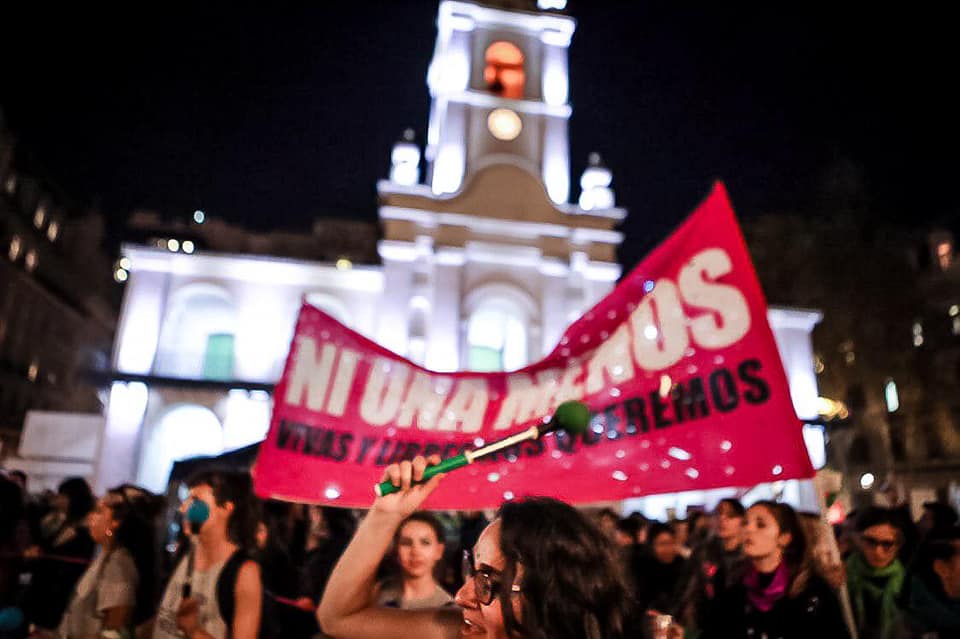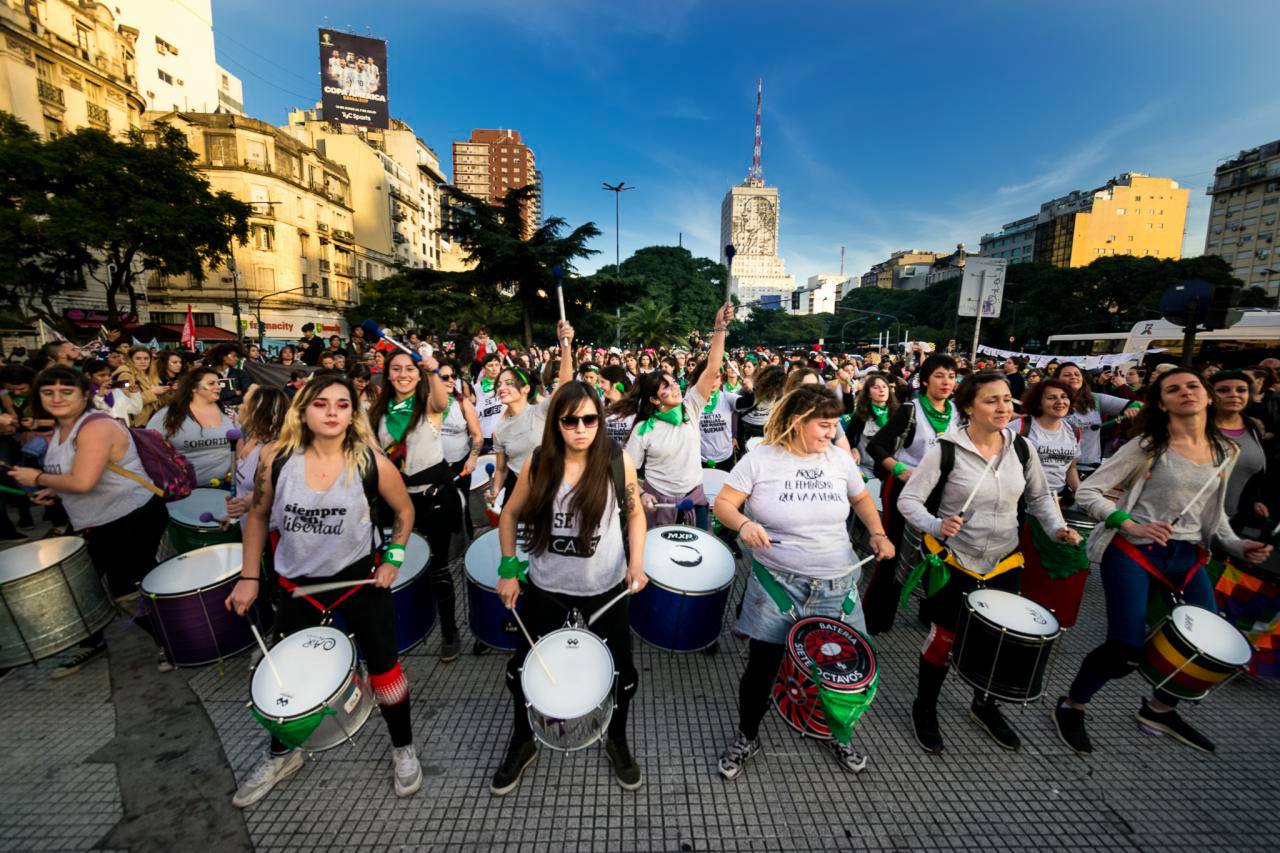This June 3, on the fourth anniversary of the formation of the Ni Una Menos movement [Not One (Woman) Less], tens of thousands of women, lesbians, bisexuals, transgender and queer people mobilized in Buenos Aires. The mobilization called for an end to gender based violence, the approval of the new Voluntary Termination of Pregnancy (IVE) bill and the implementation of the Law on Comprehensive Sexual Education (ESI).
The demonstrators marched from the Argentine National Congress to the Plaza de Mayo with placards displaying photos of the women killed during last four years to raise awareness of femicides.
Banners were also displayed with strong messages against this violence like “Sexist Violence kills Us, the Absence of the State too,” “Not One Less due to Clandestine Abortion,” “My Body, my Decision, Not One Less,” “May the Legal, Safe and Free Abortion bill become law,” “Not One Less, Trial and Punishment to rapists and murderers,” “No more violence against Women,” “In the face of patriarchal violence, Popular Self-defense,” and “Curbing violence is an Emergency.”

Ni Una Menos was born on June 3, 2015, in the face of violence against women resulting from machismo or male chauvinism. The movement emerged as an initiative by a group of feminist journalists, activists and artists who felt the need to denounce and condemn femicides, rapes and other forms of violence against women. With overwhelming support, the movement expanded quickly and became a collective campaign for various women, LGBTQ and social struggles. Today, thousands of people, hundreds of woman, LGBTQ and social organizations, activists and politicians are a part of this collective.
Every year, since its establishment in 2015, people associated with the movement march from the National Congress to Plaza de Mayo to reject violence against women and to demand equal socio-political rights for them.
This year, the march witnessed the presence of a huge majority of women who independently joined the demonstration to strengthen a collective claim. The march was joined by various feminist movements such as the National Campaign against Violence, the National Campaign for Legal, Safe and Free Abortion, as well as trade unions, social and political organizations and left political parties.
The femicide of a 14-year-old teenager Chiara Páez in May, 2015, was central reasons behind the formation of the Ni Una Menos movement. Chiara was beaten to death by her 16-year-old boyfriend Manuel Mansilla. Her body was found in the backyard of Manuel’s house in the town of Rufino, Argentina. The first march of the movement on June 3, 2015, was held in eighty cities of Argentina demanding justice for Chiara and condemning gender based violence and systematic murder of women. It was the largest march against gender violence in the history of Argentina. The killer Manuel Mansilla, was sentenced in September 2017 to 21 years in prison.
In Argentina, a woman is murdered every 30 hours only for being a woman. So far in 2019, around 135 women have been victims of femicide. In 2018, a total of 278 women were killed. According to a report published by an Argentine NGO La Casa del Encuentro, between 2008 and 2019, over 2,952 cases of femicides were reported. The report also states that 66% of the victims are between the age group of 19 to 50 years. It also highlights that in more than 62% of the cases, spouses, partners, ex-partners or boyfriends of the victims are the ones who commit the crime.
The United Nations in one of its reports, called “machismo” as one of the main causes behind the ruthless femicides because it normalizes violence against women.





